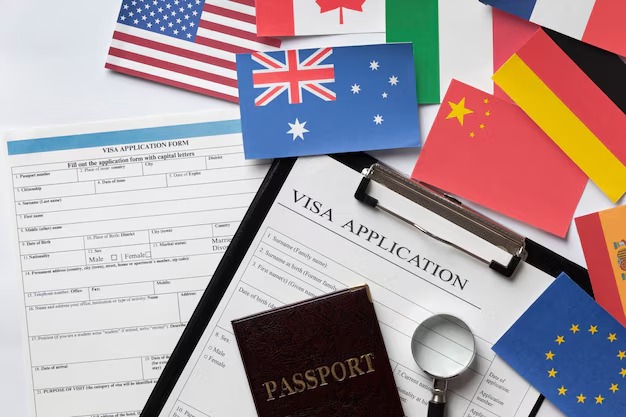
Parent Visa 143
If you’re considering reuniting with your parents in Australia under the Parent Visa , understanding the processing time is crucial. The Parent Visa Subclass 143 allows parents of Australian citizens or permanent residents to live permanently in Australia. However, the visa processing time can vary significantly, often requiring a considerable amount of time and patience. In this blog, we’ll discuss the Parent Visa 143 processing time in 2024 and the factors influencing it, and provide tips to streamline your application.
What is the Parent Visa 143?
The Subclass 143 Contributory Parent Visa enables parents of Australian citizens or permanent residents to migrate to Australia permanently. It is a contributory visa, meaning applicants must contribute a large sum of money to access Australian healthcare and other benefits.
The 143 Contributory Parent Visa has higher costs than other parent visas but offers quicker processing times. It is designed for parents who want to live permanently in Australia and can afford to contribute to the cost of their care.
Current Processing Time for Parent Visa 143 (2024)
As of 2024, the Parent Visa processing time can range between 5 to 7 years, depending on various factors, including:
- Number of Applications in the Queue
Parent visas, including Subclass 143, operate under a capped migration program. This means that only a limited number of visas are granted each year. The long processing times are due to the high volume of applications compared to the number of visas available annually. - Completeness of Application
Delays often arise when applicants submit incomplete applications or fail to provide the necessary documentation. Ensuring that your application is complete and accurate can help avoid unnecessary delays. - Health and Character Checks
All applicants must meet the Australian government’s health and character requirements. Failing to meet these requirements or delays in submitting relevant documentation can extend the processing time. - Changes in Policy
Australian immigration policies are subject to change, and any modifications to the Parent Visa program may impact processing times. It is important to stay updated on current policies through reliable sources or an immigration expert.
Steps to Reduce Parent Visa 143 Processing Time
While the Parent Visa Subclass 143 processing time is largely beyond your control.There are a few steps you can take to ensure your application proceeds as smoothly as possible:
- Submit a Complete Application
Ensure that all required documents are submitted upfront. This includes identity documents, financial proofs, and evidence of your relationship with your child in Australia. Missing or inaccurate information can lead to delays. - Meet Health and Character Requirements Early
Undergo your health assessments and provide police clearances as early as possible. These are essential components of the visa application, and any delay in obtaining these assessments can push your application further back. - Use a Registered Migration Agent
A migration agent or lawyer can help streamline the application process. They ensure that your application is accurate, complete, and submitted in a timely manner. Lex Move provides expert assistance to make sure your application is prepared for quicker processing.
Why Choose the Parent Visa 143?
The Parent Visa 143 comes with several benefits that make it an attractive option for parents who wish to live in Australia:
- Permanent Residency: This visa grants permanent residency, allowing parents to stay in Australia indefinitely.
- Access to Healthcare: Parents on this visa are eligible for Medicare, Australia’s public health insurance system.
- Pathway to Citizenship: The Parent Visa Subclass 143 provides a pathway to Australian citizenship, allowing parents to enjoy the full benefits of living in Australia.
The visa’s permanent residency status and the opportunity to apply for Australian citizenship make the Parent Visa 143 a desirable option for those seeking a long-term stay.
Alternative Visa Options: Is the Parent Visa 143 Right for You?
If the long processing time of the Subclass 143 Contributory Parent Visa concerns you, there are alternatives you may want to consider:
- Temporary Contributory Parent Visa (Subclass 173)
This visa allows parents to live temporarily in Australia for two years. While it doesn’t grant permanent residency, it’s a quicker route into the country and can later be converted to the Parent Visa . - Non-Contributory Parent Visas (Subclass 103)
These visas are more affordable but have much longer processing times, often exceeding 30 years. - Visitor Visa
For short-term stays, parents can apply for a visitor visa, which allows them to stay in Australia for up to 12 months.
Your choice depends on how soon you want to reunite with your family and your financial situation. While the Parent Visa Subclass requires a significant contribution, its processing time is shorter than many other options.
The Path to Australian Citizenship
Once your parents have successfully obtained the Parent Visa . They can live in Australia permanently and apply for Australian citizenship after meeting residency requirements. This visa is ideal for parents who wish to stay with their family in Australia on a long-term basis.
Conclusion
Applying for the Parent Visa 143 can be a lengthy process, but understanding the factors that impact processing times can help you prepare and manage expectations. By ensuring that your application is complete and up-to-date and enlisting the help of a migration agent, you can reduce delays and avoid common pitfalls. At Lex Move, we are committed to guiding you through every step of the visa process, ensuring your family reunites as smoothly and quickly as possible.
With the growing demand for Permanent Visa Australia, it’s crucial to stay informed about processing times and changes in migration policies. Contact Lex Move today for a consultation to discuss your Parent Visa application and other visa options.
Read More: Parent Visa 143 Processing Time: What to Expect in 2024


